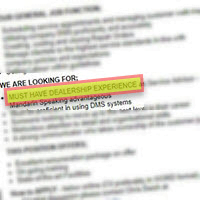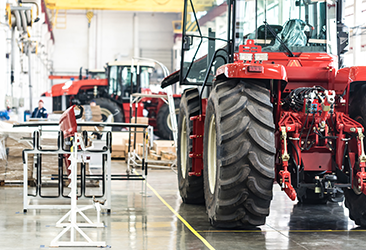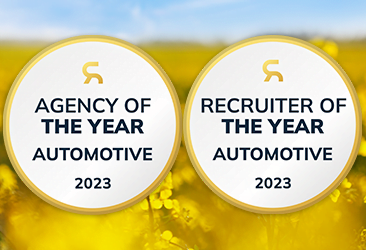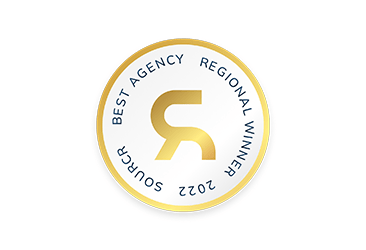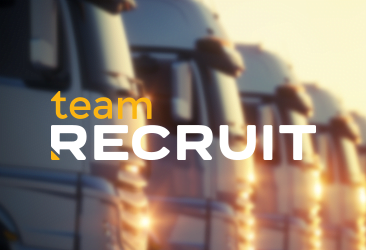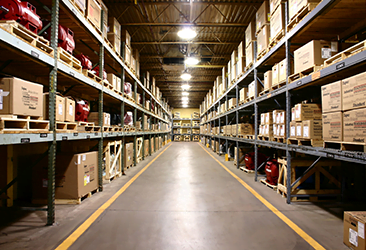After years of unprecedented wage growth, the heavy vehicle, agricultural, and construction equipment dealership market across Australia and New Zealand is seeing a nuanced adjustment for FY2025. The post-pandemic hiring frenzy has subsided, leading to a more stable yet complex environment.
The big picture for FY2025 is a two-tiered market. Macroeconomic conditions are moderating, easing broad hiring pressure. However acute skills shortages in critical technical roles haven’t stopped: they’ve intensified, directly threatening dealership revenue and long-term viability.
For employers, the focus has shifted from simply filling roles to smart workforce management. While competitive pay is still key for attracting new talent, retention now hinges on job security, clear career paths, and a supportive workplace culture. Structural barriers like regional housing affordability also complicate recruitment.
Dealerships and manufacturers must use a multi-faceted approach to thrive by offering competitive and transparent pay, investing heavily in training, proactively fighting staff burnout, and finding innovative ways around external hurdles like housing. Strategic workforce planning will be the definitive factor for gaining a competitive edge.

Economic shifts and labour market tensions
Australia’s economy is showing cautious resilience, with moderating GDP growth and easing inflation leading to interest rate cuts. This helps dealerships with borrowing costs and may boost equipment demand, especially in the strong agricultural sector. However, a tight labour market continues to fuel intense competition for talent.
New Zealand faces a slower rebound, with GDP contraction forecast for FY2025. While agriculture remains strong, construction and heavy commercial vehicle sales are struggling. The labour market is softening, and job ads are down, meaning less candidate bargaining power overall.
These differing economic paths mean dealerships need flexible strategies – aggressive talent competition in Australia versus a more cautious approach in New Zealand where the market is cooling. Candidates are also now prioritising job security alongside pay due to ongoing cost-of-living pressures.
The skills crisis: a deep dive into key roles
The skills shortage in the heavy equipment sector has become acute, posing a direct threat to dealership operations.
- The Technician chasm: from shortage to crisis: The scarcity of qualified technicians is now a systemic labour supply failure. A 2024 VACC survey in Victoria showed average vacancy fill rates for Motor Mechanics (General) below 30% and Diesel Mechanics/Technicians around 32-35%. Nationally, the industry estimates a staggering shortfall of nearly 40,000 technicians. In regional Australia, nearly 27% of businesses have three or more technician vacancies, leading to unsustainable workloads and over 20% of staff working more than 45 hours/week. New Zealand faces a similar crisis, with diesel mechanics on the long-term skill shortage list. The looming electrification transition further amplifies this, likely to create a significant demand for qualified EV Technicians, for which the current workforce is largely unprepared.
- Parts Interpreters: the next bottleneck: The experienced cohort of interpreters is approaching retirement, creating a gap in expertise. Advertised salaries reflect growing demand, ranging from AUD $65,000 for entry-level to AUD $95,000 for experienced metro candidates. In NZ, experienced heavy equipment parts interpreters command up to NZD $85,000, with Parts Managers reaching NZD $130,000.
- Service Managers: high demand, high burnout: This remains one of the toughest roles to fill due to high pressure and burnout. Salaries are high (up to AUD $160,000+ base in metro Australia), but money alone isn’t enough: significant incentive structures (profit share, KPI bonuses) are essential.
- Sales Consultants: the financial security factor: Experienced salespeople are hesitant to move due to financial instability fears. Dealerships are counteracting this by guaranteeing minimum income for 12 months. Recruiting from other industries is an option, but competitive market wages are necessary to attract skilled professionals from different fields.
Structural barriers & FY2025 salary benchmarks
Even with competitive offers, external factors are derailing recruitment:
- The regional housing crunch: The state of housing is now a critical economic barrier to consider. In many regional towns across Australia and New Zealand, affordable rentals are scarce, making it impossible for essential workers to relocate regardless of salary. Dealerships must now consider proactive housing support (relocation assistance, rental subsidies, master-leasing properties) as a necessary cost of doing business to secure talent.
- Skilled migration: a vital but complex lifeline: With local efforts falling short, skilled migration is crucial. New Zealand has added motor mechanics to its immigration Green List. In Australia, a new development for FY2025 is the increase of the Temporary Skilled Migration Income Threshold (TSMIT) and Core Skills Income Threshold (CSIT) from AUD $73,150 to AUD $76,515 from 1 July 2025. This mandatory salary floor directly increases the cost for dealerships sponsoring overseas workers.

FY2025 Salary benchmarks and compensation strategies
Competitive and well-structured compensation is foundational for talent management. Our forecasted salary benchmarks for FY2025 in the Australian and New Zealand dealership sectors have been adjusted from FY23/24 baselines, incorporating:
- Wage and inflationary pressures: A general uplift of 3-5% has been applied to most baseline salary figures.
- Role-specific shortages: For roles in critical shortage, such as Technicians, a higher forecast increase in the range of 5-7% has been applied.
- Economic divergence: Australia’s resilient market supports slightly more aggressive salary growth than New Zealand’s slower rebound.
(Please refer to the full Teamrecruit FY2025 Salary Guide for detailed tables outlining remuneration ranges across various roles in Truck, Construction/Earthmoving, and Agricultural Equipment dealerships in Australia, and Heavy Vehicle/Equipment/Ag in New Zealand, broken down by metro and regional areas where applicable. All figures are indicative and exclude superannuation/NZD equivalents.)
Beyond the base, crafting competitive packages means:
- Strong incentive structures: For management and sales, clearly defined bonuses (percentage of profit, KPI-based) are fundamental.
- Non-monetary benefits: Flexible work hours, comprehensive wellness programs, and a supportive culture are gaining significant weight in employee decision-making.
- Professional development: In New Zealand, clear career pathways are a leading driver of retention. Investment in training and growth opportunities is crucial across both countries.
Strategic outlook and recommendations for FY2025
Navigating this complex market requires a shift from reactive recruitment to proactive, strategic workforce planning.
- Winning the war for talent: refining the value proposition
- Embrace pay transparency: Lead with a transparent, competitive, and well-benchmarked salary offer.
- Sell stability and purpose: Market your dealership’s stability and the vital role of the industry in the broader economy.
- Recruit from outside the box: Systematise hiring talent from adjacent sectors (e.g., other sales backgrounds for sales roles), but offer competitive wages, not trainee pay.
- Building a resilient workforce: from recruitment to retention
- Invest in “grow your own” programs: Develop robust apprenticeship programs and clear pathways to Master Technician status, especially critical for the EV transition.
- Combat burnout proactively: Address root causes in high-pressure roles like Service Manager through workflow efficiency, reduced admin, and leadership training.
- Define and communicate career pathways: Clearly map out progression for every role, from apprentice to branch manager, demonstrating long-term commitment to employee growth.
- Future-proofing the dealership: adapting to a new era
- Address the housing barrier head-on: For regional dealerships, proactively incorporate housing support (relocation assistance, rental subsidies, master-leasing properties) into recruitment budgets.
- Prepare for the EV revolution, today: Whilst not as prolific as it is in the Automotive industry, you should consider investing soon in upskilling existing technicians for high-voltage and EV systems, and acquire necessary specialised tools.
- Leverage technology in operations: Embrace digital tools (e.g., AI-powered CRM systems, data analytics) to enhance efficiency and customer experience.
By implementing these strategies, your dealership will be well-positioned to attract, retain, and motivate the skilled workforce essential for sustained success in 2025 and beyond.
Salary Trends for Financial Year 2024-2025
Salary Trends for Truck Dealerships in Australia for FY24/25
NOTE: All figures are excluding superannuation.

Salary Trends for Construction Equipment/Earthmoving Equipment Dealerships in Australia for FY24/25
NOTE: All figures are excluding superannuation.

Salary Trends for Agricultural Equipment Dealerships in Australia for FY24/25
NOTE: All figures are excluding superannuation.

Salary Trends for Manufacturers & OEMs in Australia for FY24/25
NOTE: All figures are excluding superannuation.

Teamrecruit is Australia’s most established recruitment agency specialising in truck, earthmoving and agricultural machinery dealerships in Australia, New Zealand, the South Pacific and Southeast Asia. Find out more about Teamrecruit and how we support employers and candidates in the dealership industry.




